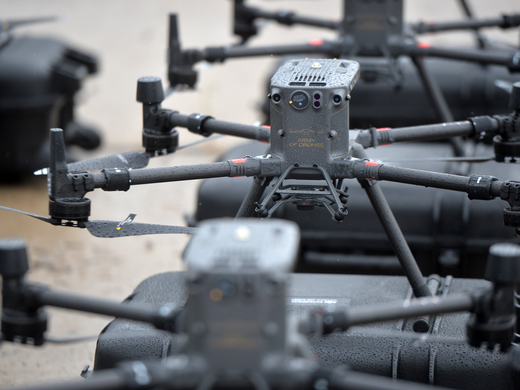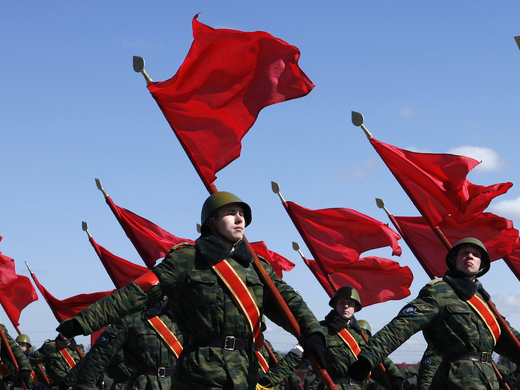Defining the security assistance force in Afghanistan as a “NATO” mission misrepresents NATO’s role and has unwelcome implications for how security operations are conducted.
In an op-ed in today’s Globe and Mail, retired General Lewis Mackenzie,[i] among the best known of Canadian Peacekeeping commanders, referred to the International Security Assistance Force (ISAF) in Afghanistan as “NATO’s,” implying it somehow belongs to NATO or is mandated by NATO, and insisted that NATO member countries have “obligations under the NATO Charter to provide adequate boots on the ground to defeat the Afghan insurgents.” His main point was to complain that most NATO members were unwilling to “honor” those obligations.
ISAF is not in fact a “NATO mission.” The American led Operation Enduring Freedom (OEF) force, still present and active there, is arguably much closer to being a NATO mission. Mounted in response to the 9-11 attacks, the US claimed the right to self-defence under the UN Charter (Article 51) when it attacked Afghanistan in response and NATO in turn invoked its Article V on grounds that an attack on one member of the alliance is an attack on them all. The US was not particularly looking for NATO back-up at the time, but some members, including Canada, provided military support to the OEF operation.
ISAF was and remains an entirely different operation with a different purpose. It was authorized by the Security Council (Res 1386) at the request of the 2001 Bonn Conference and given the specific task of assisting the Afghan government in maintaining security, initially only in Kabul and environs. The foreign troops of ISAF, including Canadians, are thus there at the request of the Security Council; they are not there under NATO Article V, and NATO members certainly do not, as Gen. Mackenzie claims, have “obligations under the NATO Charter to provide adequate boots on the ground to defeat Afghan insurgents.”
The obligations on NATO members are the same as those of any UN member – to consider how best to respond to the Security Council request. ISAF command was initially with the UK and then rotated to others, including Turkey and Germany, until August 2003 when NATO took over that role (currently more than a third of countries contributing troops to ISAF are non-NATO – although a large majority of actual troops come from NATO members).
ISAF was not a “UK mission” when it served in the command role, and it did not become a “NATO mission” when NATO took over.
In 2003 the Security Council “Authorize[d]expansion of the mandate of the International Security Assistance Force to allow it, as resources permit, to support the Afghan Transitional Authority and its successors in the maintenance of security in areas of Afghanistan outside of Kabul and its environs, so that the Afghan Authorities as well as the personnel of the United Nations and other international civilian personnel engaged, in particular, in reconstruction and humanitarian efforts, can operate in a secure environment, and to provide security assistance for the performance of other tasks in support of the Bonn Agreement.”
One problem with describing ISAF as NATO’s mission is that it encourages the redefinition of the ISAF mandate to fit a NATO model. The Security Council defines the mandate as helping the Afghan government to maintain security so that the Government, the UN and other civilians can do their work, “in particular, in reconstruction and humanitarian efforts,” to implement the Bonn agreement. But Gen. Mackenzie defines the mission as putting “adequate boots on the ground to defeat the Afghan insurgents.”
It is widely recognized that the insurgency will not end through military defeat of the insurgents. Indeed, security assistance to enable Afghan and UN authorities and NGOs to carry out the myriad of programs and measures needed to end the insurgency and thus establish some measure of peace now entails a broad range of military, diplomatic/reconciliation, humanitarian, and reconstruction/development activities. Countries in ISAF have a duty to pursue all those measures, not just put “boots on the ground.”
Another problem with reinventing ISAF as a NATO mission is that the focus inevitably turns to the interests and well-being of NATO rather than the interests and well-being of the people of Afghanistan – and only a serious excess of hubris could suggest those interests are one and the same.
Notes
[i] “Has Uncle Sam run out of patience,” The Globe and Mail, 3 February 2009,
http://www.theglobeandmail.com/servlet/story/RTGAM.20090202.wcoafghan03/BNStory/specialComment/home.


